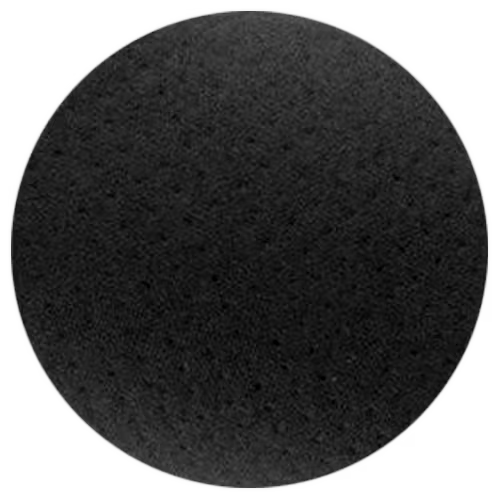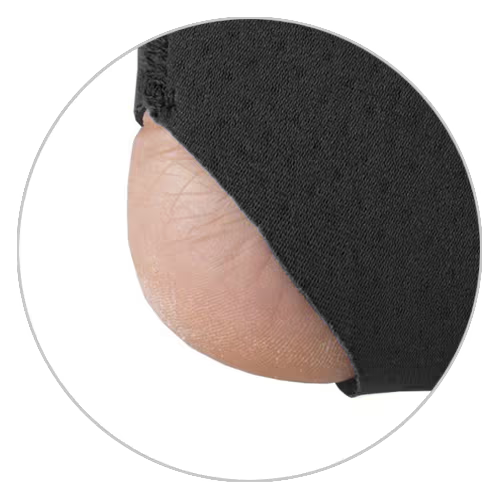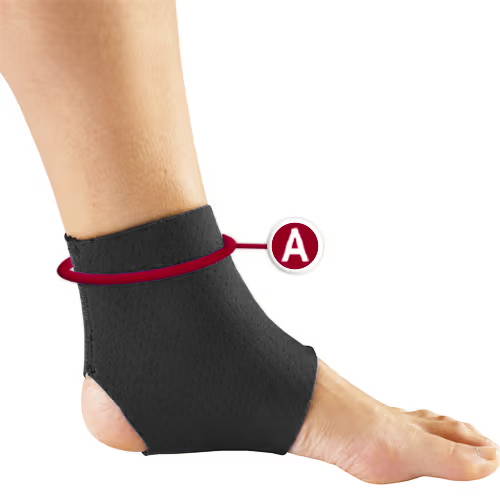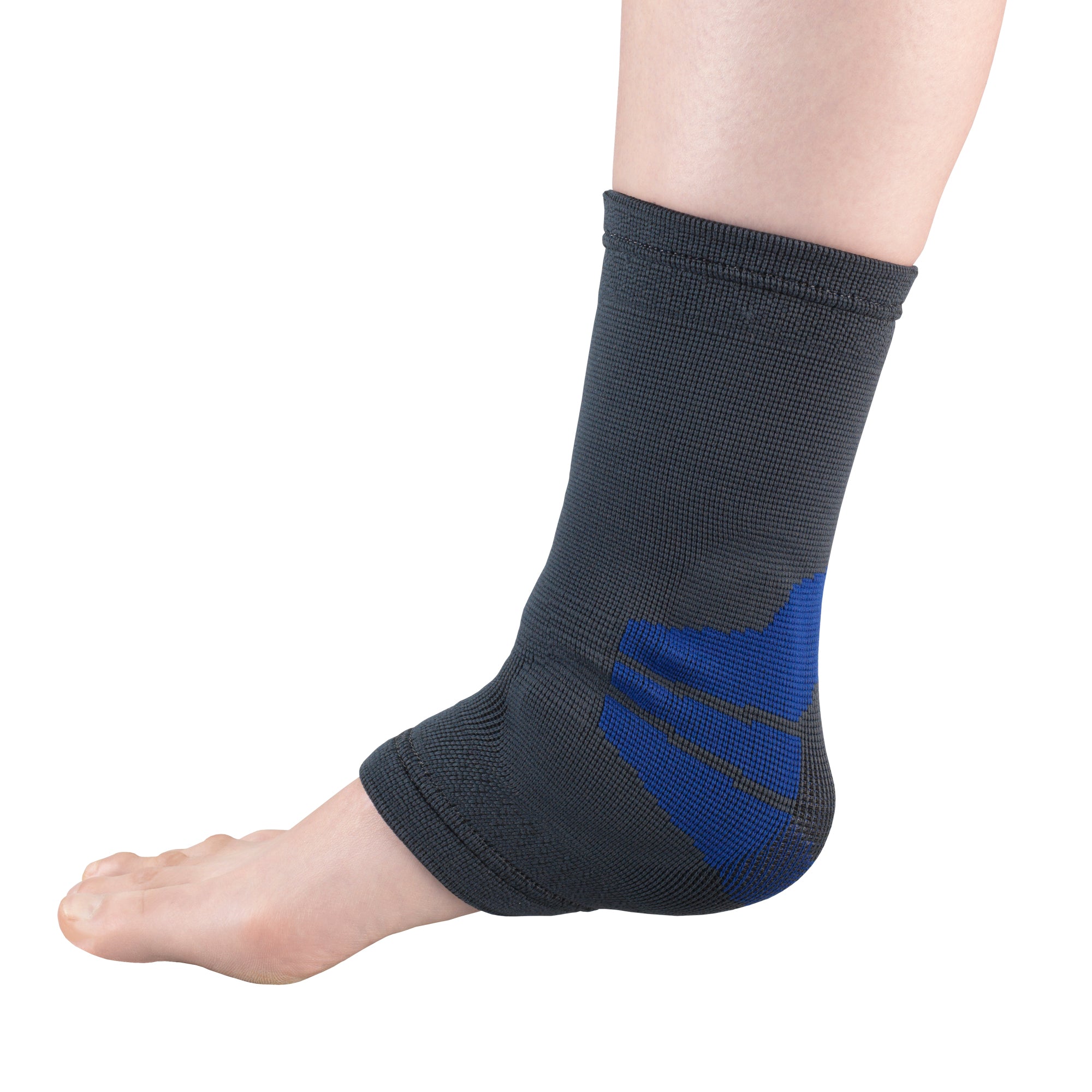0307 / NEOPRENE ANKLE SUPPORT SLIP-ON STYLE
The OTC 0307 ankle support retains natural body heat to help soothe aching muscles and maintain flexibility, provide firm, uniform compression to support a weakened ankle and offers moderate protection from bumps and bruises. The high-tech, perforated material “breathes”, allowing perspiration and moisture to escape for extended wearing comfort. Handcrafted construction includes invisible stitching and heat seal seam tape for added comfort and durability. Effective support and value to keep you comfortably active. Excellent for use in athletics and occupational activities.
Indications Listed Below
• Perforated neoprene material is breathable and allows for comfortable long-term wear
• Four-way stretch material provides even compression over the anatomical prominences of the joint
• Opening over heel minimizes binding over top of foot, helps support maintain its correct position at all times
• Latex free
Product Features

orthotex material
Perforated neoprene material is breathable and allows for comfortable long-term wear. Four-way stretch material provides even compression over the anatomical prominences of the joint.

open heel
Opening over heel minimizes binding over top of foot, helps support maintain its correct position at all times.
How to Measure for and Apply Ankle Support
| SIZE | ANKLE CIRCUMFERENCE |
|---|---|
| SMALL | 6.75" - 7.75" (17.1 - 19.7 cm) |
| MEDIUM | 7.75" - 8.75" (19.7 - 22.2 cm) |
| LARGE | 8.75" - 9.75" (22.2 - 24.8 cm) |
| X - LARGE | 9.75" - 10.75" (24.8 - 27.3 cm) |
Measuring Instructions
A. Measure around the smallest part of the ankle
Application Instructions
1. Pull the support up and over the ankle until it is centered over the joint and the opening is centered over the heel.

Medical Applications
Review the accompanying chart to determine the product that best suits your needs. On the left, you will find a variety of injuries that OTC products are specifically designed to treat and prevent. On the top, you will find the product numbers of all OTC Ankle Products. If a red box is present where the column and row intersect, your injury or condition is treated/prevented by the associated product.
| C-8 | C-64 | 0307 | 0313 | 1705 | 1706 | 1710 | 2092 | 2095 | 2097 | 2371 | 2372 | 2375 | 2376 | 2417 | 2426 | 2437 | 2547 | 2560 | 8710 | |||
|---|---|---|---|---|---|---|---|---|---|---|---|---|---|---|---|---|---|---|---|---|---|---|
| Achilles Tendonitis | ||||||||||||||||||||||
| Chronic Instability | ||||||||||||||||||||||
| Drop Foot | ||||||||||||||||||||||
| Edema | ||||||||||||||||||||||
| Joint Weakness | ||||||||||||||||||||||
| Metatarsal Fracture | ||||||||||||||||||||||
| Osteoarthritis | ||||||||||||||||||||||
| Plantar-Faciitis | ||||||||||||||||||||||
| Post Cast Removal | ||||||||||||||||||||||
| Post Metatarsal Injury | ||||||||||||||||||||||
| Post Surgery Use and Rehab | ||||||||||||||||||||||
| Post Static Pain | ||||||||||||||||||||||
| Soft Tissue Injuries | ||||||||||||||||||||||
| Sprain, Acute | ||||||||||||||||||||||
| Sprains, Grade 2 and 3 | ||||||||||||||||||||||
| Sprain, Mild | ||||||||||||||||||||||
| Sprain, Severe | ||||||||||||||||||||||
| Stable Fractures of the Ankle | ||||||||||||||||||||||
| Stress Fractures of the Foot | ||||||||||||||||||||||
| Swelling | ||||||||||||||||||||||
| Tenderness |
SPRAIN AND STRAIN CONDITIONS
These affect the connective tissues around the joints. Sprains are injuries to ligaments.The injury can be considered mild (slight stretching), moderate (partial tear), or severe(complete tearing). One or more ligaments can be injured in a sprain. The severity of the strain will depend on the extent of injury to a single ligament (whether the tear is partial or complete) and the number of ligaments involved.
Helping the joint to heal is the purpose of ankle bracing. By placing the ankle in a neutral position, the support restricts movement and relieves painful stresses on the various ligaments, tendons and muscles. Further, it aids healing by restricting or limiting the use of the injured part of the extremity.
The conditions shown below may not be treated by the product listed on this page. Please view the above Medical Applications Chart to determine what conditions this page's associated product treats.
Mild strains
A mild strain can occur for a number of reasons, but is most often caused by a person’s weight being applied to an ankle that is at an unnatural angle - eversion or inversion - with the ligament or ligament group being stretched or even torn.
MODERATE & SEVERE SPRAINS
Sprains are classified as mild, moderate or severe based on the extent of the injury and the number of ligaments involved. A moderate sprain is a slight treating of a ligament or a ligament group, while a severe sprain will always be a complete tear, and usually among a group of ligaments.
ACHILLES TENDON INJURIES
The Achilles tendon is the strongest tendon in the body and is the most often injured, usually as a result of overuse. The Achilles tendon is stretched or relaxed with every ankle movement, which can lead to a prolonged recovery period if the patient becomes too active without the proper use of ankle supports or walking aids such as canes and crutches.
ACHILLES TENDINITIS
Shown to the right is an image of Achilles tendinitis, which is an inflammation or slight tearing of the tendon.
ACHILLES RUPTURE
To the right is an image of Achilles rupture, which is a complete tear of the tendon often associated with a “popping” sound when the separation occurs. Treatment for an Achilles rupture includes reattachment surgery followed by total resting of tendon until healed and strengthened through rehabilitation.
ANKLE ANATOMY
Bones of the ankle
A. Tibia
B. Fibula
C. Talus
D. Cuboid Bone
E. Cuboid Bone
F. Intermediate Cuneiform
G. Medial Cuneiform
Tendons & Ligaments of the ankle
A. Anterior Talofibular Ligament
B. Achilles Tendon
C. Peroneus Longus Tendon
D. Achilles Tendon
E. Deltoid Ligaments
F. Anterior Tibial Tendon

